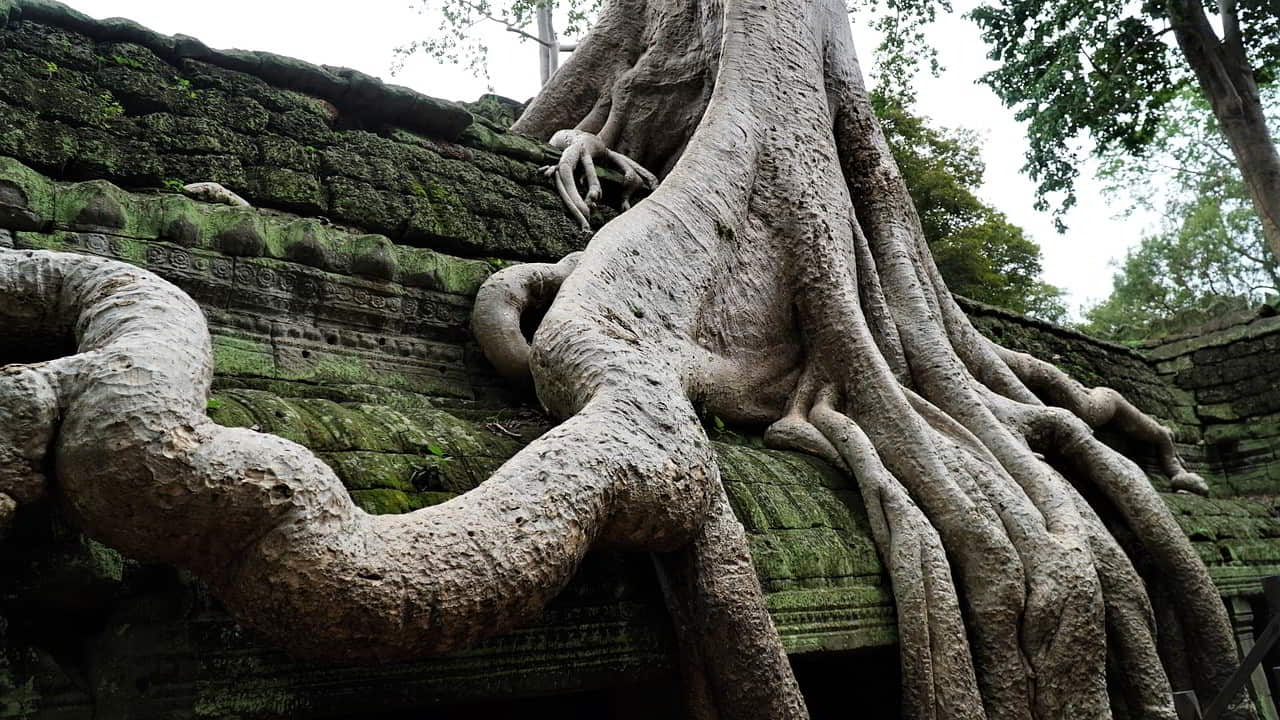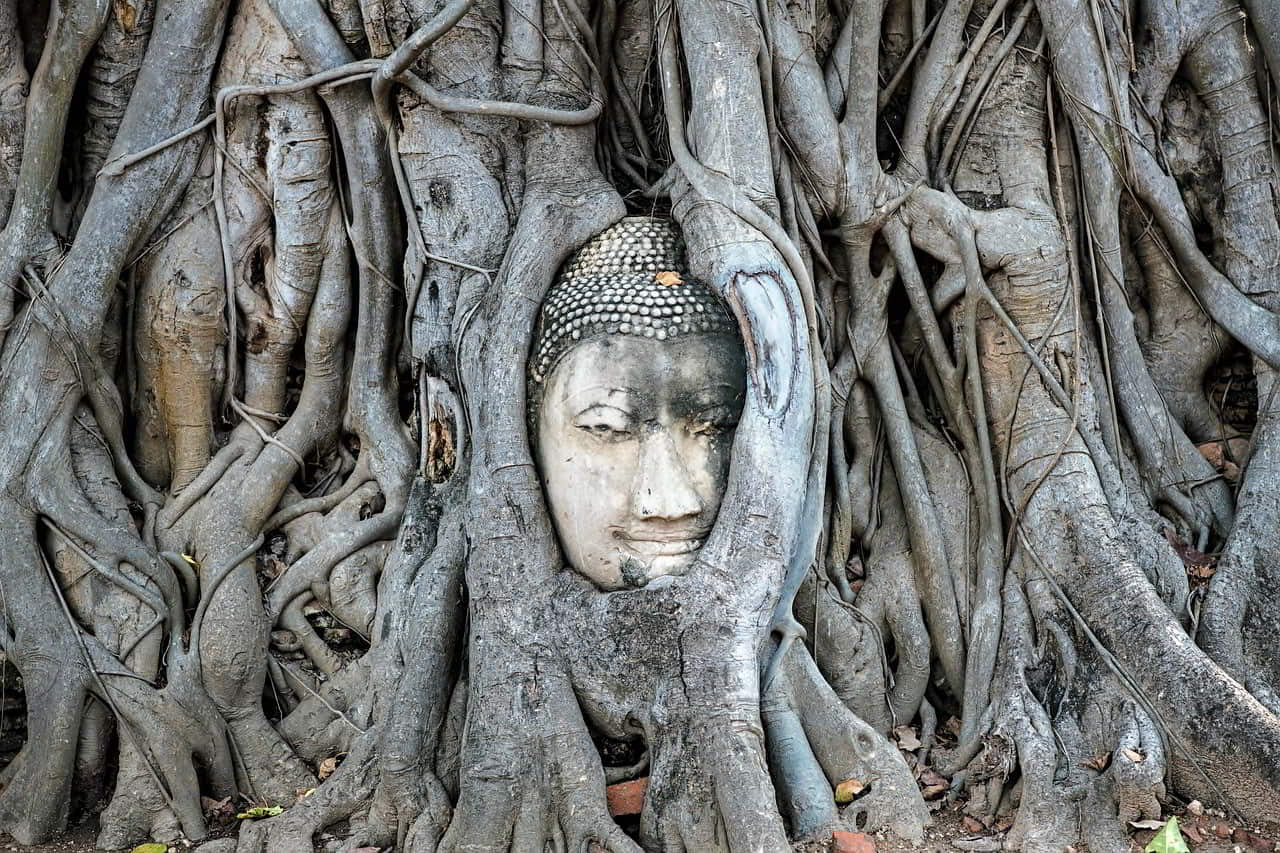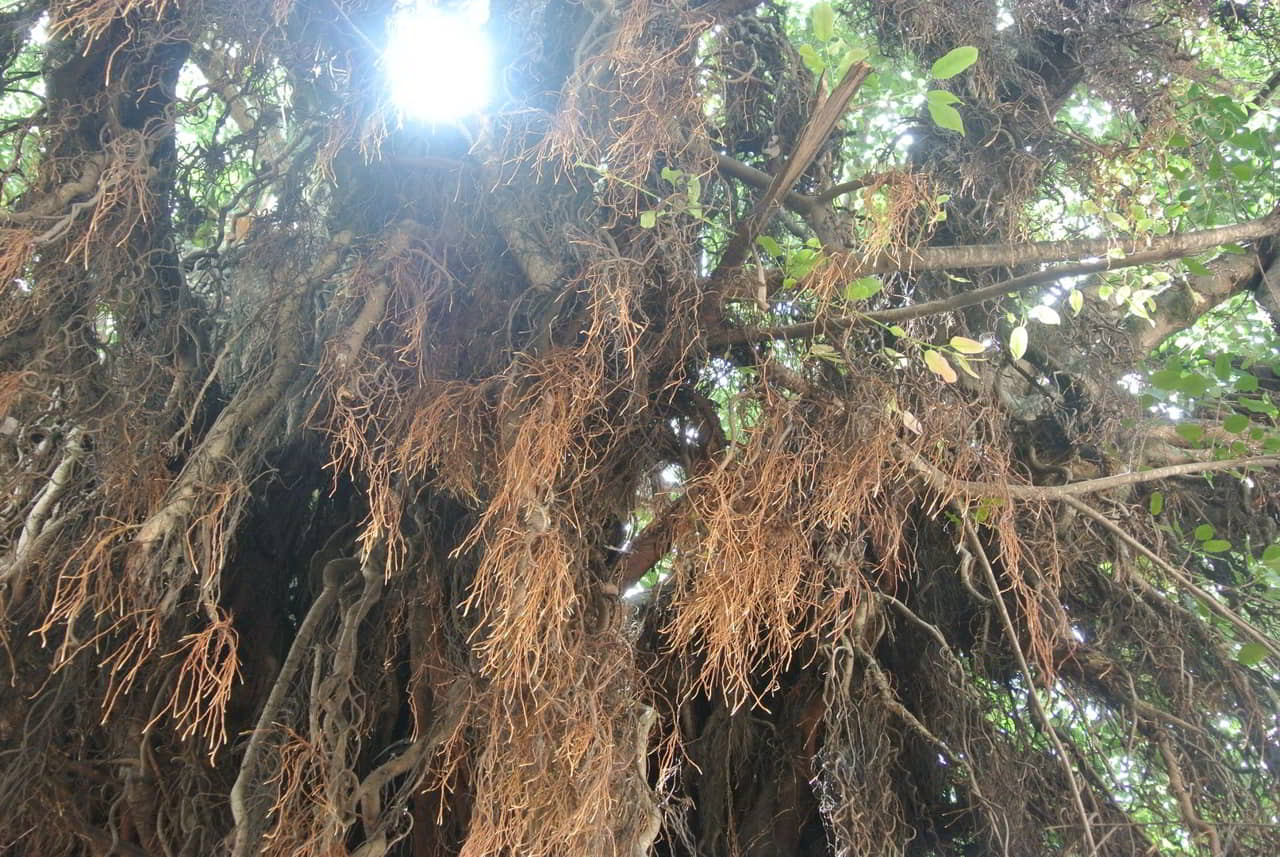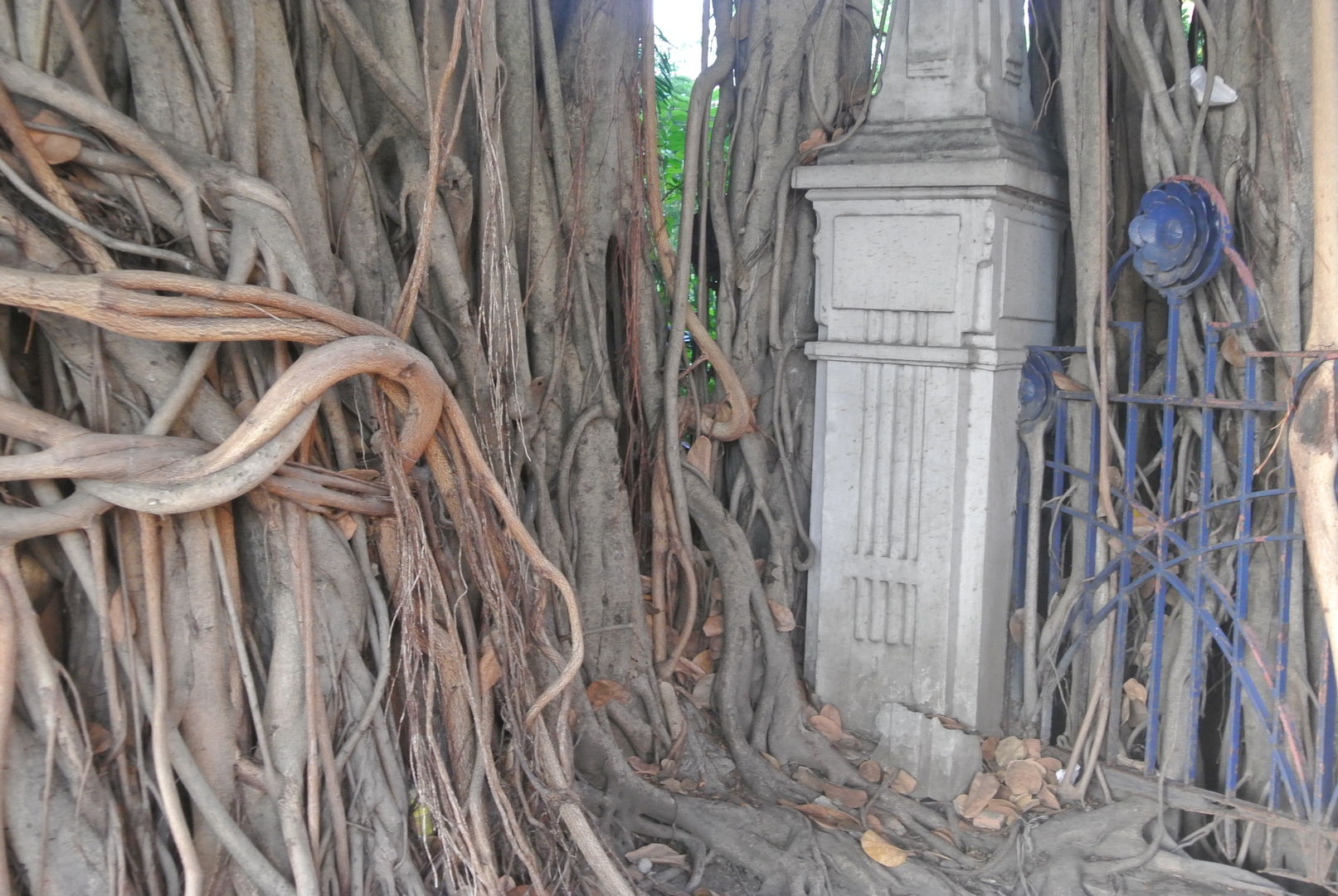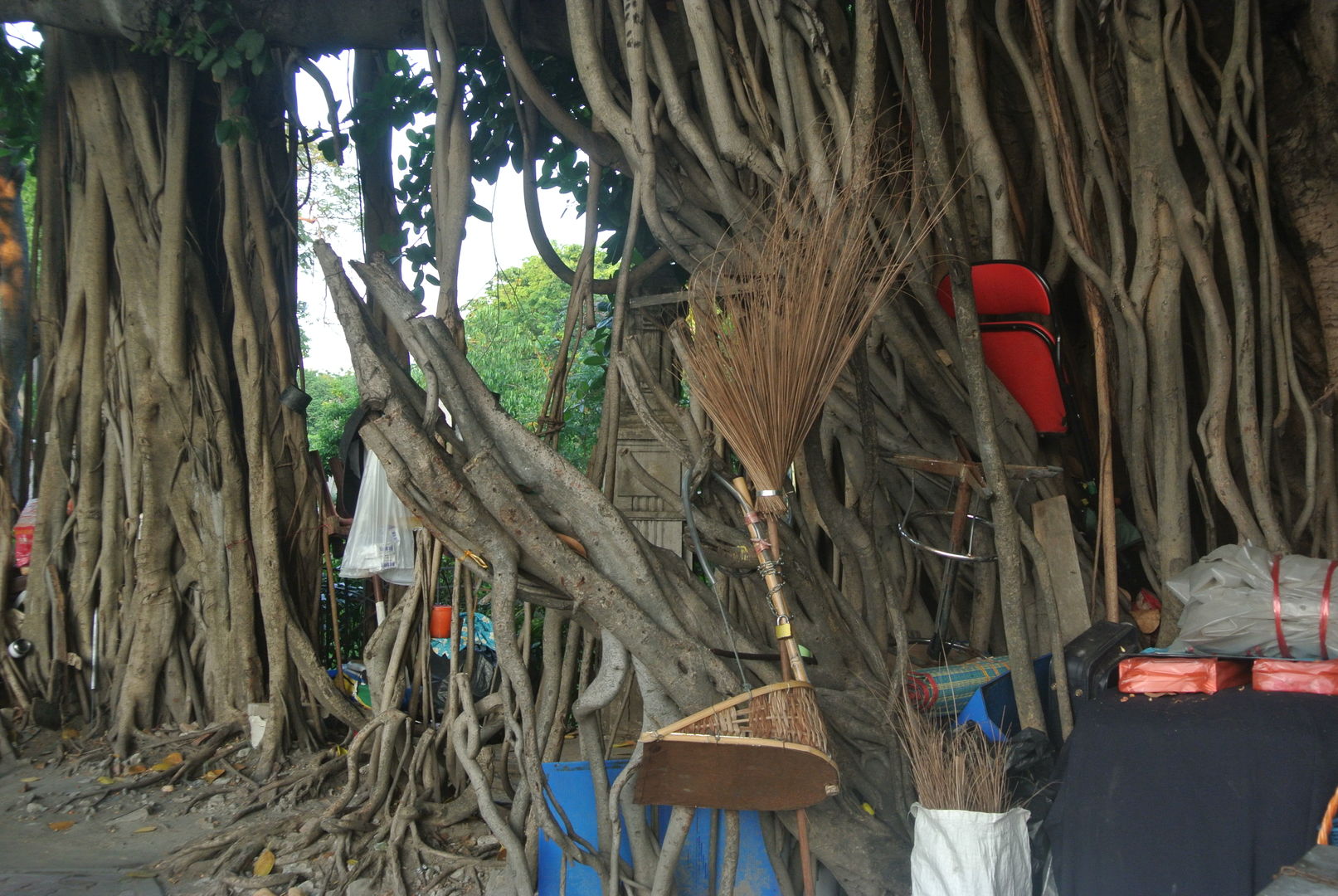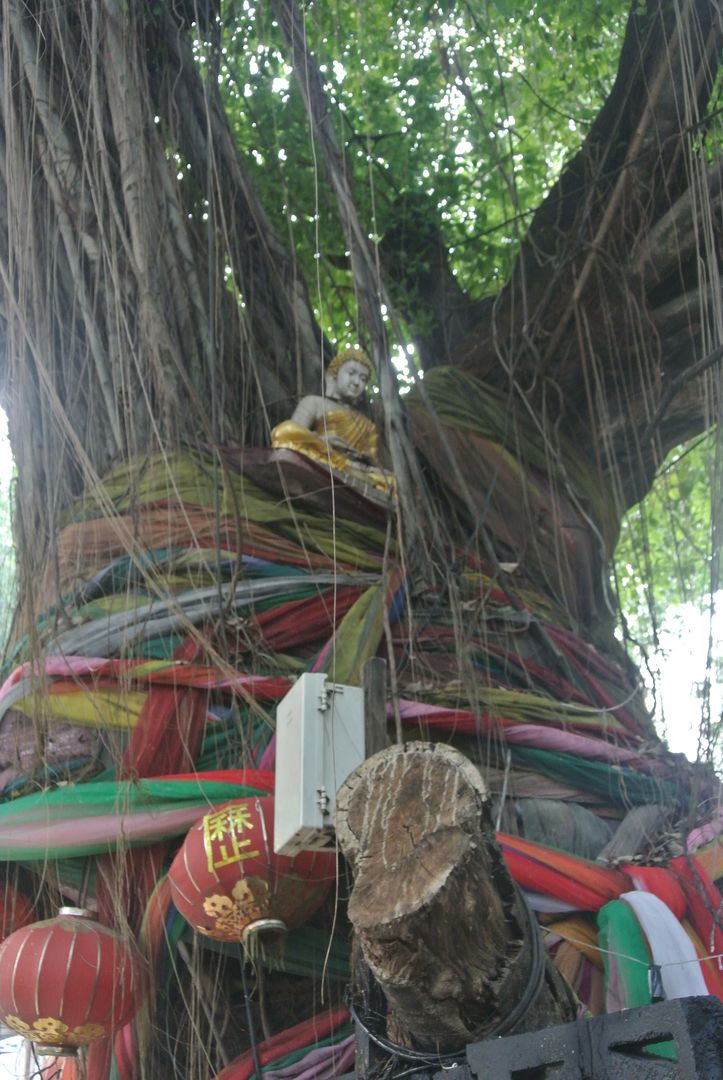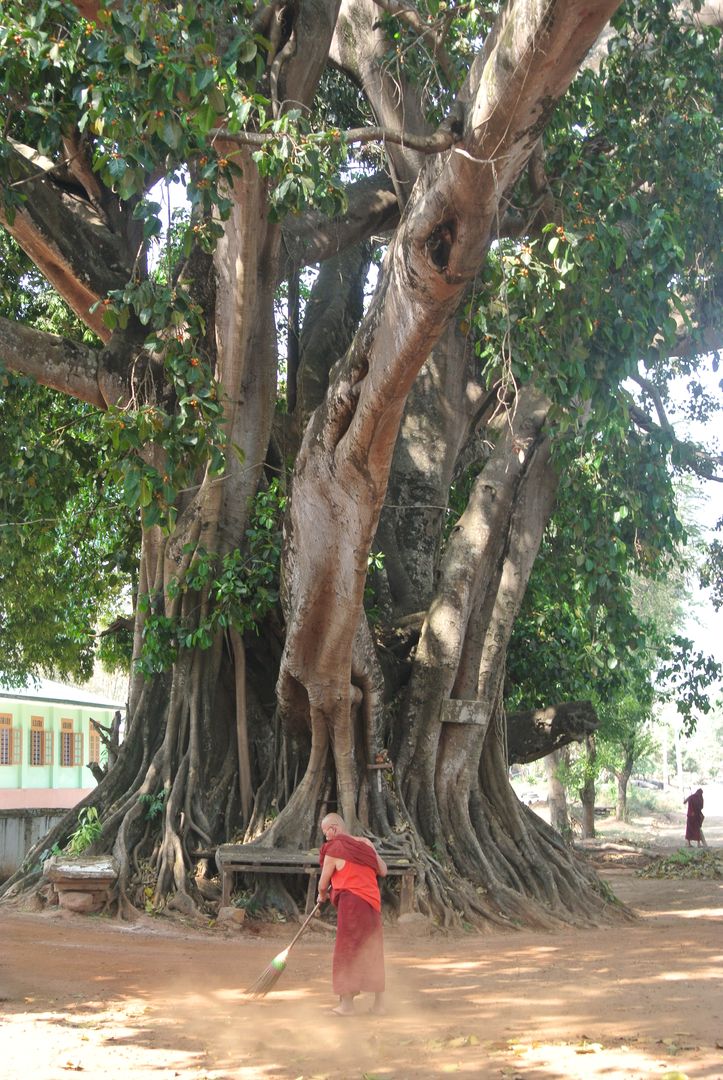
The Sacred Banyan Tree of Asia: An Extraordinary Tree
The banyan tree is a special tree, whether due to its shape, growth, or symbolism, it has acquired a unique place in Buddhist culture. It is a sacred tree that everyone must respect and honor, as without it, the Buddha’s awakening would not have taken place.
A Tree Honored Daily
It’s not uncommon to see trees surrounded by colored scarves (khatas), with mini-temples at their base and small statues of mythical characters either in the roots or attached to the branches, both in cities and in the countryside across Asia.
Khatas symbolize goodness, compassion, and luck. They are usually placed on a particular type of tree, specifically the wild fig trees or the large ficus family. The banyan tree is undoubtedly the most prominent representative of these trees.
A Tree as a Universal Symbol
This tree holds immense significance in both Hinduism and Buddhism and is known by various names: the Bodhi tree, the tree of wisdom, and the tree of knowledge. It’s the very tree that sheltered Siddhartha, providing protection from the sun with its expansive canopy.
It was beneath the leaves of this tree (which often serve as a traditional motif in temples) that Buddha attained enlightenment.
Unique Growth and Development
Beyond its sacred significance, the banyan tree possesses intriguing characteristics. In order to grow, it relies on another tree, which serves as a support. Gradually, the banyan tree engulfs the host tree, causing it to completely disappear. This is why it’s known as the strangler fig in India.
Remarkably, the banyan tree can sprawl and expand over extensive areas, thanks to its ability to develop roots from its branches. A branch becomes a root, and the root reinforces the branch. It remains uncertain whether the roots ascend or the branches descend. Symbolically, once again, we can observe a connection between the celestial and terrestrial realms, as the tree unites the entirety.
A Unique Pharmacopoeia
The banyan tree plays a significant role in the formulation of numerous remedies within Ayurvedic medicine. Its sap, leaves, and bark are utilized to create decoctions, herbal teas, balms, and various other therapeutic treatments.
Unrestrained Growth
However, beyond its symbolic and practical attributes, the banyan tree exhibits extraordinary growth. It’s not uncommon to witness immense banyan trees gradually encroaching upon spaces, completely engulfing fences, low walls, shacks, temples, and more. This phenomenon also accounts for its moniker in South America as the “walking tree.” The tree can produce multiple trunks (sometimes hundreds) and achieve such substantial girths that would leave gardeners worldwide in awe. The largest banyan tree, located in Calcutta, boasts a circumference exceeding 400 meters.
The largest banyan tree in the world is located in Howrah, India, near Kolkata (formerly Calcutta). This colossal banyan tree, known as the Great Banyan Tree, is estimated to be over 250 years old. It covers an area of nearly 4,500 square meters and spans a circumference of over 330 meters. The Great Banyan Tree is a popular tourist attraction and a symbol of the region.
Urban/Rural: The Ubiquity of the Banyan Tree
One of the most remarkable aspects is the tree’s ability to thrive in diverse urban and rural environments. It can be found in unexpected locations within cities, such as amidst roads, between buildings, in alleys, car parks, and even in neglected urban spaces.
Interestingly, despite rampant urbanization, many development projects consciously avoid interfering with these trees. The sacredness and symbolic power associated with the banyan tree persist to this day, upheld by local residents who regularly offer gifts and express gratitude. It seems that animism and general belief serve as effective defenses against thoughtless developers.



